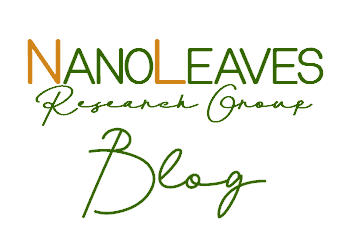 What are the potentialities of nanocelluloses exploitation? And how far are we from their entrance into the global market? Innovative enterprises are already on the market with pilot production of various forms of nanocellulose materials. The following worldwide known companies have already started to produce various forms of nanocellulose, including NFC (nanofibrillated cellulose), MFC (microfibrillated cellulose) and CNC (cellulose nanocrystals):
What are the potentialities of nanocelluloses exploitation? And how far are we from their entrance into the global market? Innovative enterprises are already on the market with pilot production of various forms of nanocellulose materials. The following worldwide known companies have already started to produce various forms of nanocellulose, including NFC (nanofibrillated cellulose), MFC (microfibrillated cellulose) and CNC (cellulose nanocrystals):
Celluforce, Alberta Innovate, Blue Goose Biorefineries and FPInnovations (Canada), US Forest Service – Forest Products Laboratory and University of Maine (USA), Melodea Ltd and Innventia AB (Sweden), Nippon paper, Daicel and Oji Paper (Japan), Borregaard and FPI (Norway), NamiCell and InoFib (France), Stora Enso, VTT and UPM Kymmene Ltd (Finland), JRS and BASF/Zelpho (Germany), Weidmann, EMPA and Omya (Switzerland), CelluComp (UK).
Research laboratories can provide amounts of nanocellulose lower than 0.1 kg/day, except the pilot plant present at INP–Grenoble, which can produce 2 kg/day.
In 2015, the worldwide announced (by enterprises and research laboratories) production amount of dry nanocellulose was >1 ton per day for both nanofibrillated cellulose and cellulose nanostructured materials.1 These values are comprehensive of the production capacities declared by only some of the above cited enterprises; some of them have not declared their effective production capacity, yet.
The production of nanocellulose from these plants must be increased, in order to satisfy the necessity of lowering production costs, and, in particular, to enable the high volume applications envisaged for the nanocellulose materials.
In 2014 Dr. J. A. Shatkin et al. published a study, carried out through literature surveys and interviews, to identify the applications of nanocellulose. The study was based on the analysis of ongoing research, state-of-art results, and recoinnassance of the intentions manifested by exploiters and investors.
This helped to give a list of market areas of implementation for the nanocelluloses, divided as follows:
– High-volume applications These applications will exploit the highest potential volume of nanocellulose and are widely recognised as feasible, because they often hold an intermediate technology readiness level. They include automotive sector, coatings for paper and textile, products for hygiene, paper fillers, building sector.
– Low-volume applications These applications will exploit a lower potential volume of cellulose nanomaterials, but are widely recognised as well as the high-volume applications. They include insulating materials, aerospace materials, paint additives and aerogels.
– Novel and emerging applications These applications are innovative, groundbreaking and recently discovered. Their knowledge is still at the level of proof of concept. They include use of nanocellulose in optoelectronics, photonic films and materials, sensors, cosmetics, water or air filtration, 3D printing, catalysis and so on.
The expected benefits for the society given by the transition from the use of oil-derivatives to nanocellulose products in these sectors will be several: first of all, the implementation of new technologies will sustain the increase of employment and improve the specialization profile of employees, that will be more skilled and better payed.
Moreover, most of these products will be produced closer to the place where they will be processed into high-added value products and selled; this element, combined to the lightweight quality possessed by nanocellulose, will drastically reduce the costs and environmental impact for raw materials transportation.
The biodegradability and renewability of cellulose nanomaterials will respond to the concerns about the environmental impact of present technologies and about the progressive deployment of materials resources.
Last but not least, the substitution of plastic materials with cellulose will contribute to the decrease of CO2 emission in the atmosphere as an effect of the carbon dioxide consumption produced by trees, that would enter into the carbon economy for those products: this outcome will positively reduce the effects on global climate change.
References
1 Miller, J.; Nanocellulose: technology applications, and markets, 2014, TAPPI international conference on nanotechnology for renewable materials, 23–26 June, Vancouver, BC
2 Shatkin, J. A.; Wegner, T. H.; Bilek, E. M.; Cowie, J.; Market projections of cellulose nanomaterial-enabled products − Part 1: Applications, 2014, TAPPI Journal, 13, 9-17.
Copyrights of this article belong to Alessandra Operamolla. All rights reserved.
